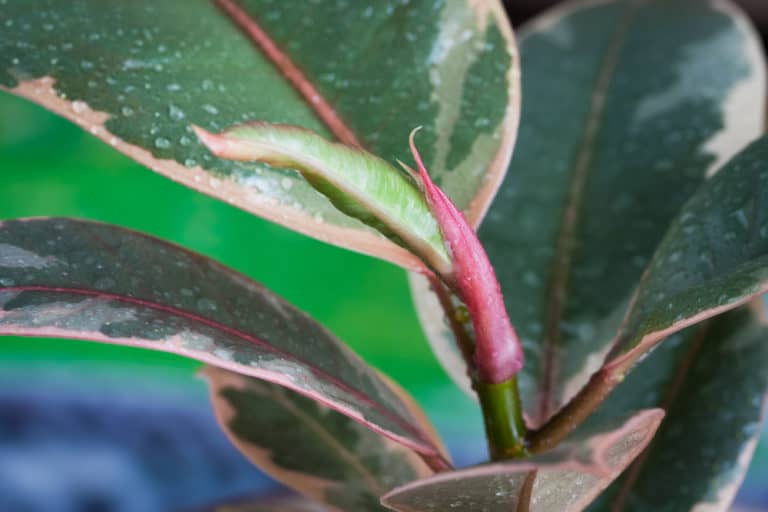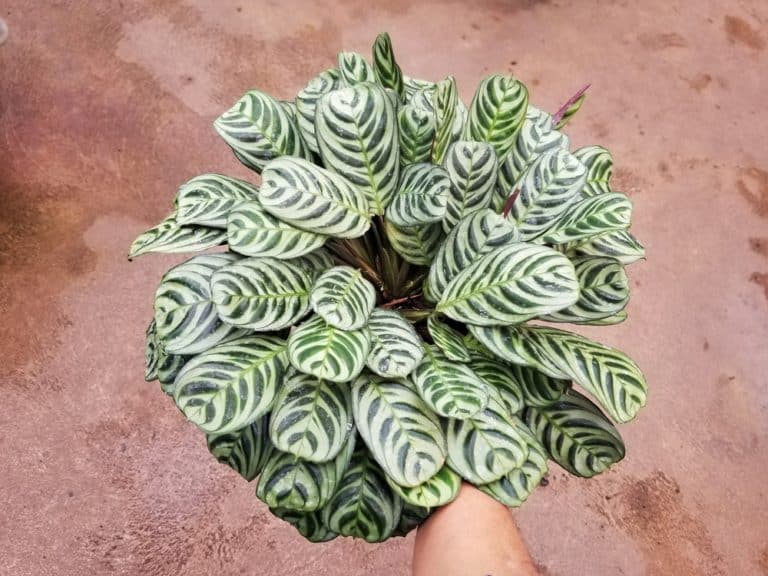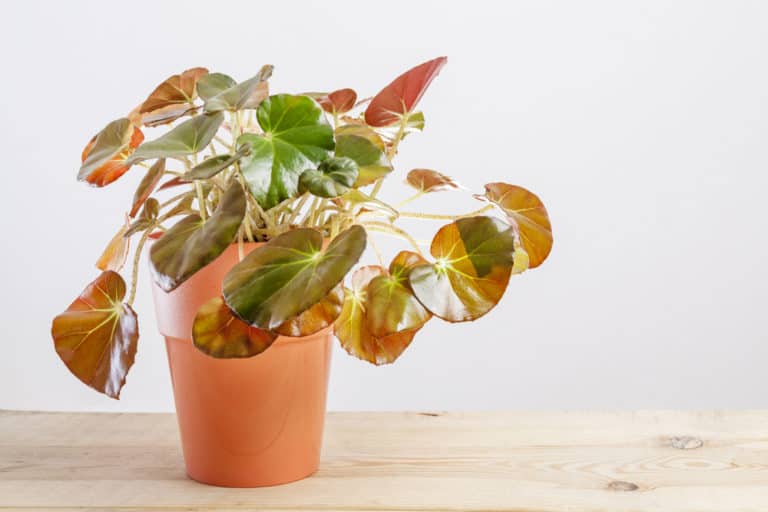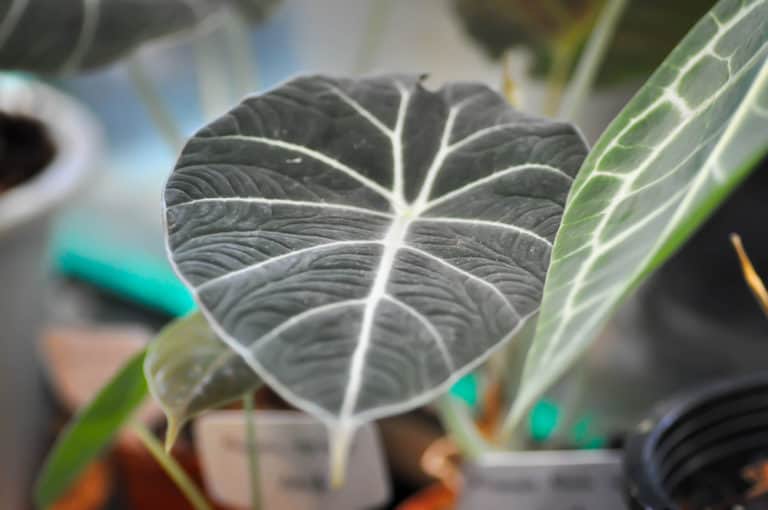Philodendron Xanadu ‘Winterbourn’ Care Guide (2024)
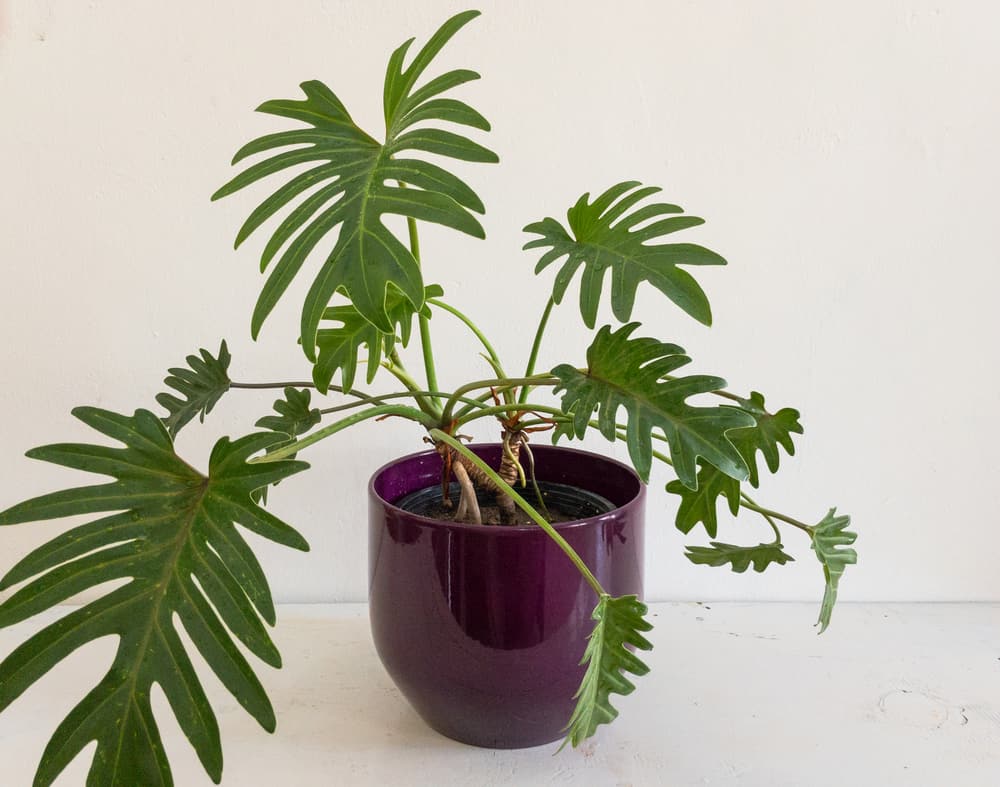
Philodendron xanadu is a big, bushy tropical plant that will become an outstanding part of your indoor garden.
The Xanadu plant has everything you need in a houseplant: it’s easy to grow, has gorgeous evergreen leaves, and will fit into smaller spots with ease.
This fast-growing plant will quickly create a tropical atmosphere in your home.
| Scientific Name | Thaumatophyllum Xanadu |
| Common Name | Philodendron Xanadu, Philodendron Winterbourn |
| Light | Medium indirect sunlight |
| Watering | Water if the top 2 inches of soil are dry |
| Temperature | 65 to 82ºF (18 to 28ºC) |
| Hardiness Zone | 9b to 12 |
| Humidity | 50 to 70% |
| Soil Type | Rich, quick-draining, loamy |
| Soil pH | 5.6 to 7.5 (acidic to neutral) |
| Fertilizing | A balanced feed once a month in spring and summer |
| Repotting | Every 1 to 2 years |
| Pruning | Spring or Fall |
| Propagation | Division |
| Toxicity | Toxic to humans and pets |
| Mature Size | 2 to 4 feet as a houseplant |
| Bloom Time | Rarely blooms indoors |
What’s Unique About Philodendron xanadu?
The origins of the Philodendron xanadu plant are a bit of a mystery.
The philodendron family of plants are native to the Brazilian rainforest, but this particular cultivar was patented as Philodendron xanadu in Australia in the 1980’s.
However, it has since then been found growing in the wild in Brazil, and has been renamed Thaumatophyllum Xanadu.
Technically, it’s not a philodendron, but it is still popularly called one, and the care requirements are identical.
Philodendron xanadu plants are known for their large, many-lobed leaves that grow in profusion on this bushy plant.
Growing Philodendron xanadu doesn’t require advanced knowledge or skills, making it a perfect first plant for new indoor growers.
Philodendron xanadu Care
In the Brazilian rainforest where Philodendron xanadu originates, it grows in the shady understory, in a hot, steamy environment.
While your Philodendron xanadu plant care won’t involve recreating that exact microclimate, it’s easy to provide your Philodendron xanadu with all that it needs.
Essentially, good Xanadu plant care entails getting the essentials of light, watering, and heat right.
Light
In the rainforests, Philodendron xanadu grows in the shade of the tree canopy, and so Xanadu plant light needs are the same in your home.
Philodendron xanadu light requirements are for medium, indirect light, or between 2,500 and 10,000 lux.
Full sun can seriously damage this shade-loving plant.
You can easily accommodate this a few feet away from a north or east-facing window, but with a south or west exposure you should be more careful.
Of course, a south window that is shaded all day by a tree outside would be perfect in summer.
However, if that tree loses its leaves in winter, make sure to move your Philodendron xanadu to a shadier spot in the house.
Watering
Philodendron xanadu needs soil that is fairly moist, just like in its native rainforest.
However, if its soil is too wet, it will struggle and eventually die.
Philodendron xanadu watering should be done when the top 2 inches of the soil are dry. Just stick your finger in to see if it’s ready for watering.
Water Xanadu plant by pouring room temperature water over the entire surface until some starts to drain out the bottom.
Philodendron xanadu’s watering needs are best met with distilled or rain water, as the fluoride and chlorine in tap water can damage it.
If you must use tap water, let it sit for a day to dissipate the chemicals.
Temperature
The Philodendron xanadu temperature range is 65 to 82ºF (18 to 28ºC).
Basically, if your home’s temperature is comfortable for you, it will suit your Philodendron xanadu.
The temperature for Xanadu plant that will encourage the best growth is around 73ºF (23ºC).
You can also move it outdoors in summer to give it a few months of really hot weather.
However, its temperature tolerance is limited below 55ºF (13ºC). Keep your Philodendron xanadu out of drafts and away from air conditioners.
It can only be grown outdoors year-round in tropical or sub-tropical zones, as it has no frost hardiness at all.
Humidity
Like all denizens of the tropical rainforests, Philodendron xanadu loves high humidity, so the ideal humidity for Xanadu plant is 70% or more.
However, Philodendron xanadu humidity requirements are more forgiving than that. While you should strive for a humidity level between 50 and 70%, your Philodendron xanadu will usually be just fine at 40%.
If you want to see the healthiest growth and lushest leaves, though, it’s worth looking for ways to boost the humidity right around your Philodendron xanadu.
You can set its pot on a pebble tray filled with water, or mist the leaves several times a week.
The best solution is to place a small humidifier near it and your other houseplants.
Soil
Philodendron xanadu soil should be porous and well-draining, with plenty of organic matter.
The appropriate pH level for Xanadu plant is 5.6 to 7.5, or acidic to neutral.
A really simple soil for Xanadu plant is just 100% peat moss. It will hold enough moisture, while at the same time maintaining an open structure that will let the roots breathe.
A commercial aroid soil mix would be perfect for your Philodendron xanadu, without any amendments needed.
However, if you use a standard indoor plant potting mix, add equal parts of perlite and peat moss to improve the drainage.
Fertilizer
You should use a fertilizer for Xanadu plant to keep it growing well and pumping out the lushest of leaves.
A good fertilizer ratio for your Philodendron xanadu is a standard 10-10-10 formulation. Any good liquid indoor plant fertilizer will work fine.
Apply your Philodendron xanadu fertilizer once a month in spring and summer, stopping in fall and winter as it enters its dormant period. Always feed your Philodendron xanadu right after you’ve watered.
Dilute the fertilizer to half its recommended strength and pour the liquid evenly over the surface of the soil.
If there is a build-up of fertilizer salts in the soil, flush them out by running water through the soil for about 10 minutes.
Potting & Repotting
It’s time for Philodendron xanadu repotting when it starts to become rootbound, which may be every year or two.
Even if it’s reached its full size, repotting Xanadu plant every two years is a good idea to give it fresh potting soil.
If your Philodendron xanadu’s roots have filled its current pot, you can move up one pot size, or 2 inches in diameter. Any more than that will set back its growth.
Also make sure that the new pot has drainage holes so that the roots will not be sitting in water.
Repotting is a great opportunity to divide your Philodendron xanadu to propagate more plants.
Pruning
You do not need to do a lot of Philodendron xanadu pruning.
Of course, you will want to trim off any dead or damaged leaves that will lessen the good looks of this leafy tropical plant.
The only other reason you would have for cutting Xanadu plant is if it starts to get too wide for the spot you’ve got it growing in.
Whenever you prune your Philodendron xanadu, cut the petioles as close to the stem as possible, using sharp, sterilized scissors or knives.
Do not leave any plant debris on the soil surface, as that may encourage fungus gnats.
Propagation
The easiest method of Philodendron xanadu propagation is to divide the root ball, which can usually be done when repotting.
To propagate Xanadu plant, pull the root ball out of the pot, and clean off as much of the soil as possible. If necessary, use a handheld water faucet to rinse it clean.
Gently tug the roots apart, cutting only if necessary. Your goal is to end up with a handful of roots with stems attached, probably from around the outer edges of the main plant.
Repot the mother plant, and then pot up your new baby Philodendron xanadus in individual small pots.
Also, make sure to check out our in-depth Philodendron billietiae plant care guide.
Common Problems of Philodendron xanadu
It’s safe to say that you are less likely to have any Philodendron xanadu problems if you have taken the trouble to give it the growing conditions it needs.
However, if you are having problems with Xanadu plant, do not despair! You can usually solve any problem and return the leaves to full health.
Pests
No houseplant is invulnerable to bugs, and the Xanadu plant is no exception.
To keep Philodendron xanadu pests away, wipe down the leaves once a month with insecticidal soap or neem oil.
If you see small raised yellow bumps and webs, spray the whole plant down with plain water to get rid of spider mites.
Little green insects under the leaves are aphids, which you can vacuum up with a hand vac.
Fungus gnats are little flies on the soil surface. If you keep all plant material off the soil, they are less likely to appear.
Wipe away the colonies of fluffy mealybugs from under the leaves with a cotton ball soaked in rubbing alcohol.
Diseases
Philodendron xanadu diseases can usually be avoided if you keep your plant in the moist but never sopping wet soil that it needs to thrive.
Overly wet soil or leaves can cause bacterial and fungal diseases on your Xanadu plant.
When leaves turn yellow, and stems are mushy, pull out the root ball and see if you’ve got black, foul-smelling roots. That’s root rot.
If so, trim off the infected parts and repot your Philodendron xanadu in fresh, porous soil.
Leaf spot can be a bacterial or fungal infection, causing unsightly blotches on the leaves. Cut off all affected leaves at the central stem and dispose of them in the garbage.
Growing Problems
Still other growing problems are simply your Philodendron xanadu reacting to poor growing conditions, resulting in what appears to be a sick plant.
All you have to do is improve its environment and it should bounce back to good health.
If your Philodendron xanadu has yellowing leaves but the soil isn’t soaked, it’s probably getting too much sun. Move it out of the direct light.
Brown leaves probably mean that the soil is too dry. Give the whole pot a good soaking until the soil is fully moistened.
If just the leaf tips are turning brown, you should try upping the humidity levels for your Philodendron xanadu.
Toxicity of Philodendron xanadu
The Xanadu plant is toxic to humans and pets.
The calcium oxalate in all parts of the plant can cause severe reactions when ingested, or even in cases of skin exposure to the sap
The toxicity is a particular concern for animals, but care should be taken around children as well.
For Humans
Because of the calcium oxalate in Philodendron xanadu, it is considered moderately toxic to humans.
Children are more at risk because toddlers sometimes try eating things they shouldn’t.
If a child does eat some of the foliage of Philodendron xanadu, they are likely to spit it out because of the bad taste.
However, they may still experience pain in their lips and mouth, which can be soothed with a cool washcloth or popsicle.
If a child has a swollen tongue or airways, take them to the emergency room at once.
If you get the sap on your skin, rinse it off to prevent irritation.
For Pets
Philodendron xanadu is more of a risk for pets, including cats, dogs, and rabbits.
The sharp calcium oxalate crystals can pierce delicate tissues and cause excessive drooling, vomiting, diarrhea, or swelling of the tongue and airways.
If you observe any of these symptoms in your pet, take it to the veterinarian immediately to prevent serious organ damage.
As a precaution, find a spot for your Philodendron xanadu in your home that is off limits to small members of the household.
Since it will only grow to a full height of less than 4 feet, you may be able to keep it on an elevated platform out of reach.
Philodendron xanadu Appearance
The Philodendron xanadu appearance is all about its large, glossy, deeply-lobed leaves which grow in glorious profusion on this bushy tropical evergreen.
It’s great for adding a touch of the tropics indoors and out.
While you may never see a Xanadu plant flower, especially when grown inside, the luxuriant foliage is more than enough reason to grow it.
Foliage
The foliage of Philodendron xanadu is definitely the star of the show.
A Philodendron xanadu leaf can grow as long as 18 inches, and 14 inches across. Even smaller leaves will grow to a foot long.
They have deep, regularly spaced lobes, with between 15 and 20 per leaf, for a very open look.
New leaves unfurl from the tips of dark green petioles sprouting from the center of the plant, as older leaves die off from the bottom up.
Leaves are dark green and glossy, with a thick texture.
They should be wiped down once a month to keep them clean.
Flowering
Philodendron xanadu flowering is very uncommon on plants grown indoors in containers, as they do not grow big enough.
Blooming usually only occurs on Philodendron xanadu grown outdoors in tropical regions where they can be planted in the ground year-round.
Plants must mature before flowering in late spring to early summer.
The flowers are not particularly attractive, consisting of a red spathe wrapped around a spadix covered in tiny white flowers.
Since they are not the main reason for growing Philodendron xanadu, many growers cut off the flower spikes as they emerge. That way, the plant is able to concentrate its resources on leaf production.
Size and Growth
When grown indoors, the full size of Philodendron xanadu is 2 to 4 feet tall with a spread of 3 to 5 feet.
The growth rate of Philodendron xanadu is moderate, taking several years to reach its mature size.
Outdoors, a Philodendron xanadu can reach up to 5 feet in height with a 6 foot spread.
As it grows, the leaves grow more densely, creating a full, bushy look. The leaves naturally droop down and out on their petioles, creating a dense, bushy appearance right down to the soil level.
Philodendron xanadu has a strong, thick central stem that keeps it upright.
Philodendron xanadu Fragrance
For the most part, there is no Philodendron xanadu fragrance.
Some growers have reported that the sap has a slight scent similar to that of tomato foliage.
However, you would only smell the sap when cutting leaves or in case of accidentally breaking the foliage.
Since the sap can cause irritation, that’s something you don’t want happening often.
The flowers never appear on indoor houseplants, so any chance of scent from them is negligible.
This means that Philodendron xanadu can be used freely in places that discourage or forbid heavily scented plants, such as nursing homes.
In your own home, you may prefer unscented plants because of your own sensitivities to fragrance.
Suggested Uses for Philodendron xanadu
Philodendron xanadu is a great plant to use indoors, as it’s a good way to improve your indoor environment. It has been proven to filter formaldehyde, benzene, and trichloroethylene from indoor air.
If you have room for it, put your Philodendron xanadu in a bathroom with some natural light.
This is a great way to soften the hard surfaces with lots of natural foliage, while at the same time letting the plant enjoy the higher humidity level there.
In summer, you can move your Philodendron xanadu out to a shady spot on your balcony or patio for an instant tropical oasis.
FAQ
What is Philodendron xanadu?
Philodendron xanadu, or Thaumatophyllum Xanadu, is a tropical evergreen non-vining plant native to the Brazilian rainforest. It is usually grown as an indoor potted plant.
How to identify Philodendron xanadu?
Philodendron xanadu has large, deeply lobed leaves up to 18 inches long, growing into a dense, bushy form.They have a glossy green texture and are thick and leathery.
How to care for Philodendron xanadu?
Philodendron xanadu should be kept in a medium filtered light, in a warm and humid environment and regularly watered to keep the soil consistently moist.
How to grow Philodendron xanadu indoors?
Philodendron xanadu is usually grown as an indoor container plant, with regular fertilization and watering to maintain lush foliage growth. It should be kept warm and out of bright light.
How to grow Philodendron xanadu outdoors?
Philodendron xanadu can be grown outdoors year-round in zones 9b to 12. It should be planted in the shade in soil that is kept moist.
How fast does Philodendron xanadu grow?
Philodendron xanadu has a moderate growth rate, taking several years to reach its full size. It is evergreen so does not die back to the ground in winter.
How tall does Philodendron xanadu grow?
Philodendron xanadu will grow to a height of 2 to 4 feet with a 3 to 5 foot spread indoors. Outdoors, it can reach 5 feet with a 6 foot spread.
How to make Philodendron xanadu grow faster?
Philodendron xanadu will grow its fastest in temperatures over 73ºF (23ºC), with humidity over 70%. It needs consistently moist soil and regular fertilizing during spring and summer.
How to stake Philodendron xanadu?
Philodendron xanadu does not need to be staked, as it has a stem that grows thick and strong as the plant reaches its full size.
How to pot Philodendron xanadu?
Philodendron xanadu should be potted in a preferably unglazed clay pot, with sufficient drainage holes to keep the soil from being saturated. Use a well-draining soil rich in organic matter.
How to revive Philodendron xanadu?
If your Philodendron xanadu has completely dried out soil, place the pot in a pail of water or bathtub and let it slowly absorb water until soaked through.
Why is my Philodendron xanadu dying?
If your Philodendron xanadu leaves are spotted or yellowing, it may have a bacterial or fungal disease. Cut away all infected parts and repot it in fresh soil after disinfecting the pot.
Why is my Philodendron xanadu drooping?
If your Philodendron xanadu is drooping , it may be too dry or too wet. Once you’ve determined the cause, either soak the soil or replace it with fresh, porous soil.
How cold can Philodendron xanadu tolerate?
Philodendron xanadu will not grow properly below 55ºF (13ºC), and freezing temperatures will kill it. It should be kept out of drafts and away from windows in winter.
How to get rid of pests on Philodendron xanadu?
Philodendron xanadu pests can usually be controlled by wiping down the leaves once a month with a cloth soaked in an insecticidal soap or neem oil mixture.
Is Philodendron xanadu toxic to cats?
Yes, Philodendron xanadu is toxic to cats. If your cat has started vomiting or develops diarrhea, or has difficulty breathing, take it to the veterinarian immediately.
Is Philodendron xanadu toxic to dogs?
Yes, Philodendron xanadu is toxic to dogs. If your dog starts wheezing or drooling excessively, or has vomiting and diarrhea, take it to the vet.
Is Philodendron xanadu toxic to children?
Yes, Philodendron xanadu is toxic to children. If a child has a swollen tongue or constricted airways, do not try to deal with it at home, but take them to the emergency room.
Is Philodendron xanadu toxic to humans?
Yes, Philodendron xanadu is toxic to humans. For adults, you are most likely to have an allergic reaction to the sap. Rinse it off as soon as possible.
Does Philodendron xanadu have a scent?
No, neither the Philodendron xanadu foliage or the rare flowers have a scent. They are safe to use around people with fragrance allergies or sensitivities.

